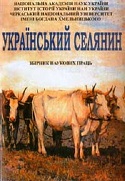ПОЛЬСЬКА КООПЕРАЦІЯ В ПЕРШІІЙ ТРЕТИНІ ХХ СТ.: СТАНОВЛЕННЯ, ОСОБЛИВОСТІ РОЗВИТКУ
Main Article Content
Abstract
movement play a particularly important role in
transition periods, in the periods of so-called transit
economies and the formation of civil society. Today, the
international experience of economic self-organization
of the society is extremely relevant for Ukraine.
The methodology of the research is based on the
principles of historical knowledge, such as science,
historicism, objectivity, systematic analysis, etc., as well
as use of general scientific, special historical and
special source methods.
The scientific novelty is that a comprehensive study
of the formation and development of national
cooperation in Poland has been conducted. AllEuropean tendencies of development of cooperative
movement were specified. It turned out that the
peculiarity of Polish cooperation was that the Poles
did not have their own state and were under the
influence of the legislation and the level of the economy
of various European states. The Polish intelligentsia,
large national capital, and general democratic
tendencies formed under the influence of wars and
revolutions, played an important role in the
development of the national cooperative movement.
Conclusions. Thus, in the early twentieth century
in Europe, the spread of cooperation was seen as means
of economic and national-cultural revival. The latter
factor led to increased interest in the cooperative form
of self-organization of the population by the
intelligentsia of the imperial states. On the other hand,
the authorities of the region, responding to the success
of the development of the cooperative movement in
neighboring countries, hoped for its positive
contribution to the rise of the predominantly agrarian
economy of their countries and the stabilization of social
relations. In general, agrarian Europe was becoming
industrial and cooperation, as a form of mitigating social
conflicts, either became the subject of research, or fell
out as one that was competing with the ideology of
state parties.
All segments of the population actively participated
in the cooperative movement; especially the peasantry,
which in many cases initiated the creation of societies.
Despite various shortcomings (ignorance of members,
lack of work experience, abuse by managers, etc.), they
played an important role in improving the economic
situation of the population: significantly reduced prices
for consumer goods, provided the necessary funds and
knowledge to improve the economy, helped organize
production and sales of products, contributed to raising
the level of agricultural culture.
In general, cooperation was an important element
not only of economic prosperity. Contributing to raising
the level of literacy, caring for the well-being of the
population, they gradually became an important
element of public life. This is especially evident in the
examples of women’s cooperatives. The formation of a
women’s economic organization was a significant step
in the process of women’s self-affirmation, and required
great efforts to ensure its functioning. It was through
cooperation that women were given a chance to have
economic and later political independence.
Article Details
References
Иванюк В. Возникновение и современное положение
кооперативного движения в Польше. Международная
кооперация. 1926. № 7. С. 15-23.
Бородаевский С. Кооперация среди славян. СанкПетербург, 1912. 80 с.
Тотомианц В. Кооперативная жизнь за границей.
Кооперативная жизнь. 1913. № 5–6. С. 16-34.
Глазков В., Хвостов Б. Кредитная кооперация.
Москва : Центросоюз, 1974. 224 с.
Вольф Г. Народные банки. Москва : Типография
Сытина, 1915. 436 с.
Хевешии А. Проблема венгерского крестьянства
(земельный вопрос). Крестьянский интернационал. 1924.
№ 1. С. 61.
Лацко М. Обострение внутренних противоречий
социальной структуры в Венгрии (1919–1941). Социальная
структура и политические движения в странах
Центральной и Юго-Восточной Европы. Москва, 1987. С.
–37.
Булацель А. Очерки социально-политической жизни
современной Болгарии. Москва : ГИЗ, 1925. 136 с.
Межецкий В. К вопросу о политической позиции
рабочего класса Польши в межвоенный период. Социальная
структура и политические движения в странах
Центральной и Юго-Восточной Европы. Москва, 1987. С.
-49.
Махлин Б. Положение и перспективы
потребительского кооперативного движения.
Международная кооперация. 1925. № 9. С. 12–23.
Махлин Б. Кооперативное движение в Польше.
Международная кооперация. 1925. № 3–4. С. 47–55.
Коларов В. Сельскохозяйственная кооперация и
задачи коммунистов. Аграрные проблемы. 1932. Кн. 7. С.
-16.
Мелин Ж. Назад к земле. Москва : Труд, 1914. 190 с.
Айненкель А. Крестьянство и крестьянские партии
в политической системе ІІ Речи Посполитой. Социальная
структура и политические движения в странах
Центральной и Юго-Восточной Европы. 1987. С. 79-91.
Program wyborczy UNKW – Medrzecki Wlodzimierz:
«Wojewodztwo wolynskie 1921 – 1939». Wroclaw, 1988. S.
–91
Baginski Bronislaw. Spoldzielczosc na Wolyniu. Luck,
, S. 16, 58, 77.
Watkins W. International Cooperative Alliance 1895-
London, 1970. 387 р.
Report of the Proceedings of the Eleventh Congress of
the International Cooperative Alliance held at Ghent 1-th to 7-
th September, 1924. – London. URL: http://www.wisc.edu/
uwcc/icie/issues/priii/21cent/declar.html.
Sharp E. Buyers and builders: a Jub ilee sketch of the
Women’s Cooperative Guild 1893-1933.1933. 407 р

